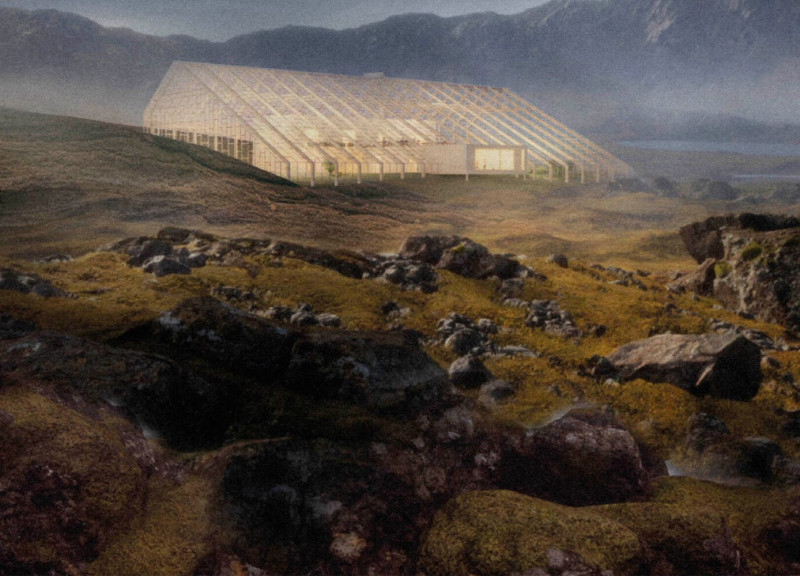5 key facts about this project
The design features a greenhouse and related facilities focused on sustainable food production while fostering community involvement. Set in Iceland, an area known for its harsh climate and rich geothermal resources, the structure aims to create a space that connects visitors with nature. The overall design encourages interaction between agriculture and educational pursuits, emphasizing the importance of fresh food.
SITING AND ENVIRONMENTAL INTEGRATION
The greenhouse is carefully positioned to take full advantage of the breathtaking Icelandic landscape, offering views of notable features such as the Mývatn nature baths and Hverfjall volcano. This placement enhances the experience for anyone using the facility. The design creates opportunities for light to filter through, allowing the inside and outside to merge in a meaningful way.
FUNCTIONAL LAYOUT AND COMMUNITY FOCUS
The layout promotes a farm-to-table concept with areas designed for growing, dining, and learning. The greenhouse plays a central role, facilitating the growth and preparation of organic produce right before visitors' eyes. The facility includes a restaurant that can accommodate over 100 guests, an organic market, and flexible spaces for yoga classes, workshops, and discussions. This arrangement encourages community engagement and supports initiatives that focus on health and wellness.
SUSTAINABILITY AND TECHNOLOGICAL INNOVATION
Sustainability is a key aspect of the design. It uses renewable geothermal energy and incorporates advanced farming practices like aquaponics and vertical farming. These features allow the facility to create a self-sufficient ecosystem that minimizes the need for outside resources. The greenhouse's heating system utilizes geothermal hot water, providing ideal conditions for plants and nurturing diverse forms of life.
MATERIALS AND STRUCTURAL DETAILS
The materials chosen for the greenhouse are selected with environmental impact in mind. Larch wood is used for cladding, while locally sourced concrete provides stability in the foundations. The walls are supported by a glulam wooden frame, and large glass panels allow natural light to pour in, essential for plant growth. Together, these components create a structure that is functional while remaining visually appealing.
In the greenhouse, fish like brown or golden trout are raised alongside vegetables, enhancing the project’s focus on promoting awareness about sustainable food practices. This arrangement highlights the relationship between people and the ecosystems that sustain them.






















































